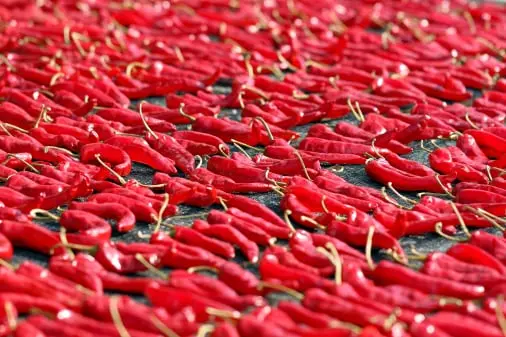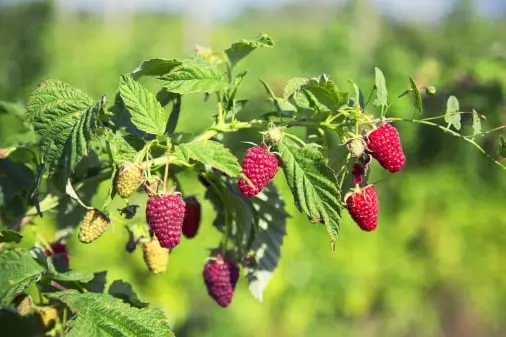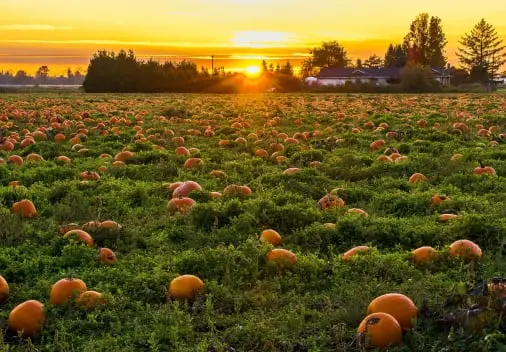Sales solution fresh produce traceability app:
Sales solution fresh produce traceability app packing fruit vegetable: the Farmsoft app manages fresh produce traceability: orders, picking, shipping, sales, and even export/import of wholesale fresh produce.

Sales solution fresh produce Traceability during production & packing
View Traceability App Specifications.
Sales & wholesale: Invoice, order, shipping containers, dispatch, and documentation for fruit & vegetable packer / import / export
Choose from a selection of built in invoice templates, or modify to suit your needs. Invoices can be exported to avoid double entry.
Manage fresh produce orders from customers, orders are used during the order picking process to ensure accurate order fulfillment.
Manage shipping containers, digital and analog thermometers, and customize other shipping container information as required. Assign shipping containers to order and invoices in advance.
Use built in industry standard Bill Of Lading, Invoice, and other dispatch documentation, modify them, or design your own with the Document Designer tool.
Check each pallet from a list (or scan), to ensure exact order fulfillment.
Manage multiple price lists by customer x part x variety and feature. Automatic prices on new orders.
Featuring:
Optionally capture dispatch temperatures, times, and employee, for pallets, cool rooms, and trucks/shipping containers
Generate invoices for product that was packed in your packhouse, purchased from a third party, or packed on behalf of another company/customer
Print transport documentation, pick lists, government paperwork, export documentation, and organic certificates
Sell directly to Sales Orders, or;
Sell directly to an Invoice without needing a Sales Order
Sell produce on ‘consignment’ where no price has been agreed
Maintain price-lists for markets, specific customers, and specific products
Assign sales to sales persons
Bar-code pallet or inventory scanning to add product to an order
Mobile point of sale, manage inventory in trucks, mobile invoicing, in field orders from clients
Automatically email specific documents to selected customers during dispatch and shipping processes
Compare stock on hand with orders from customers
Manage shipping containers and all related details & documents
Use for all garlic packing processes
Insert photos of important shipments directly onto the invoice or dispatch for quality references
Purchase Orders include an approval process, and an email alerts process that alerts the author of approval status and alerts staff that need to approve purchase orders. Email orders to suppliers.

Sales solution fresh produce packhouse hygiene checklist for food safety
Easily customized, choose from templates, modify them, or design your own invoice BOL and other documents (ask your consultant to do it for you for premium clients).
During the dispatch process, invoices & bill of lading can be automatically sent to your choice of customer, transport company, or even employee as required.
Fresh produce wholesale import / export
From customer orders, to customer price lists, generating invoices, documentation for export, organic certificates, shipping processes, and shipping container management - farmsoft has you covered for fresh produce packing, processing, wholesale, import and export.
sales wholesale fresh produce fruitbill of lading BOL fresh produce wholesale sales
Sales system fresh produce
Bill of lading for fresh produce
Fresh produce documentation such as pick lists, bill of lading, dispatch dockets, and transport notes have never been easier and are automatically presented when orders are ready to ship. You can specify which documents are preferred by which customer to ensure each customer receives the correct documentation.
When each order is shipped, automatically email the bill of lading to your choice of customer, transport provider, or internal team members.

Sales solution fresh produce Traceability management best practices
Traceback & The Produce Traceability Initiative (PTI) to improve fresh produce traceability, recall, and audits.
Department of Financial & Management Engineering An important benefit of growing your growers from within is the opportunity to indoctrinate them into your company culture at the same time they're learning good plant culture. With both employee and employer loyalty seemingly hitting bottom barrel these days, internal training and promotion programs could be a great way to attract and keep valuable employees long-term in a competitive grower market. Keeping great employees, and paying them more as they progress, is always less costly than repeatedly hiring anew.
From January 1, 2006 traceability will cease to be an added-value element in the agricultural industry and will become obligatory because of the introduction of the new EU legislation,” explains Pedro de la Peña, the technical manager of E-FRUITRACE at Agromare in Spain. All of the actors involved in the agri-food sector therefore need comprehensive and compatible solutions to allow them to track produce.”
Since refining is a continuous process, a constant input of crude palm oil is required. As we have seen, the crude palm oil was supplied from different origins. So, when we speak about traceability in the palm oil supply chain, it means we can identify all the palm oil mills that could have been supplying the oil in your product. Knowing that most of the mill's supply base is located within a radius of 50 kilometres, traceability provides you with a list of potential mills of origin. Any verification of sustainable practices on the oil supplied by a certain mill, should happen in this area.
Sales of milk and dairy products to restaurants, schools and other institutions have declined rapidly during the COVID-19 pandemic, leaving dairy farmers with excess milk
supplies.
Farmers are being asked to slow production, find alternative buyers and, in some cases, discard milk.
Farmers say the drop in demand comes at the "worst time," as warmer spring weather encourages cows to produce more.
**Fresh produce sales remain noticeably higher than the same time last year as the coronavirus crisis continues.
For the week ending April 5, dollar sales were 14.2% higher than the same week last year. The week of March 29, sales were up 8.1%.
Recent weeks mark some normalization of demand after produce sales saw jumps of 29.7% and 34.5% for two weeks in mid-March.
Joe Watson, vice president of membership and engagement for the Produce Marketing Association tells thepacker.com, the effect of canceled events, from March Madness to Easter celebrations, should also be taken into consideration.

Sales solution fresh produce Supplier Traceability Management
**As one of the most consumed fresh vegetables, lettuce plays an important role in American diets, and researchers say increasing nutrients in lettuce could improve health without asking people to change their dietary habits.
At a Future of Lettuce Symposium, California scientists described progress in breeding lettuce higher in nutrients such as vitamin C, antioxidants and beta carotene, and lettuce that lasts longer after harvest.
Fresh vegetables continue to outperform fresh fruit sales
In the ninth week of coronavirus-related shopping, patterns continued to evolve. Between the typical Mother’s Day sales boost and shoppers flocking to the store once more to stock up on meat amid ongoing coverage of shortages, grocery sales had another good week, and produce along with it. Trip, spending and channel choices continued to be in flux and fresh e-commerce is here to stay. All these developments had significant impact on fresh produce sales. 210 Analytics, IRI and PMA partnered to understand the effect for produce in dollars and volume throughout the pandemic.
Fresh produce gains remained highly elevated the second week of May. Fresh produce growth for the week of May 10 versus the comparable week in 2019 increased 17.1% — virtually unchanged from the prior week. Fresh vegetables continued to easily outperform fruit, but both achieved double-digit increases. Meanwhile, consumer interest in all three temperature states for fruits and vegetables continued, with dollars split between fresh, frozen and shelf-stable. Frozen once more had the highest gains, up 39.2%, despite continued high out-of-stocks in the frozen food aisle.
Fresh produce increased 17.1% over the comparable week in 2019.
Frozen, +39.2%
Shelf-stable, +28.8%
Source: IRI, Total US, MULO, % growth vs. year ago week ending May 10, 2020
Fresh fruit sales in August
US Organic Produce Sales Jumped 14% in 2020
While sales and volume of conventional produce also increased, they were outpaced by organic amid the COVID-19 pandemic.
Jan 21st, 2021
Mike Hockett
I Stock 871231060
iStock
Amid the COVID-19 pandemic, which has driven consumers to buy food at groceries and cook at home instead of eating out, Americans are eating more organic.
The Organic Produce Network released its 2020 Organic Produce Performance Report on Thursday, showing that sales of organic fresh produce was up 14.2 percent last year compared to 2019. Sales of conventional produce also saw a healthy increase at 10.7 percent.
The OPN said organic fresh produce sales totaled $8.54 billion in 2020, up more than $1 billion over 2019 and represented 12 percent of all fresh produce sales, citing scanned data from Nielsen.
The amount of organic fresh produce bought grew even faster. The OPN said total organic volume in 2020 increased 16 percent over 2019, while conventional produce volume rose by 9 percent. The biggest organic product driver continues to be bananas, which had a 16 percent volume increase in 2020.
The OPN noted that 2020’s organic produce sales increase reflected the pandemic that impacted sales for the last nine months of the year. This was evident in that, of the top 10 organic sales and volume categories, nine of them had double-digit growth in 2020.
Organic fresh produce by region in 2020:
“The continued strength of organic fruit and vegetable sales through 2020 despite pandemic-related economic challenges underscores the depth of consumer demand for organic products,” the OPN quoted Steve Lutz, senior vice president of insights and innovation at Category Partners. “Across all of 2020, organic sales growth continued to outpace conventional. As we hopefully see the pandemic begin to subside into 2021, the market opportunities for fresh organic fruits and vegetables in the coming year remain outstanding. There are wide swaths of the US where organic fruits and vegetables have limited distribution and narrow assortment in many conventional supermarkets. This indicates that across a multitude of organic produce categories, there remain significant growth opportunities both by gaining distribution but also in supplying latent consumer demand.”
“Cherry season is always fast and their top three sales rank placement was short lived,” said Parker. “Yet, cherry sales remain in the top 10, with apples, grapes bananas and avocados showing strong sales. Importantly, all but three fruits managed to improve sales year-over-year in August and apples and mixed fruit grew sales by double digits. Deflation in avocados has been pulling sales down for a while, even though engagement and volume sales are strong.”
Berries, apples, bananas and grapes have been steady top 10 sellers, but mandarins, peaches, cherries and mixed fruit are all relative newcomers. Cherries and peaches tend to have short selling seasons and mandarins replaced oranges to represent citrus fruits.
What’s next?
The elevated COVID-19 case counts prompted some reversal in the normalization of shopping patterns, but nothing like the changes seen in 2020 or earlier this year. Engagement with restaurants remained high even if slightly fewer people ate on premise. The mix of food service and retail solving consumer meal needs remains tipped to the retail/at home side for the foreseeable future as it has been since March 2020.
As of yet, most school districts are planning to resume in-person education. As of the second week of August, the IRI survey found that:
11% of kids ages six to 12 and 14% of teenagers will be in virtual education.
4% of children 6-12 and 5% of teenagers will be in hybrid education (a combination of virtual and in person)
79% of children 6-12 and 37% of teenagers will be at school in person.
This is in vast contrast to August 2020 when 58% of children were in virtual education and only 16% of children attended school in person.
Additionally, fewer people are working from home. In August 2020, 34% of primary shoppers in the IRI survey were working from home five days a week versus 28% in the August 2021 wave. Likewise, the share who works from home one or more days a week decreased from 53% to 46%.